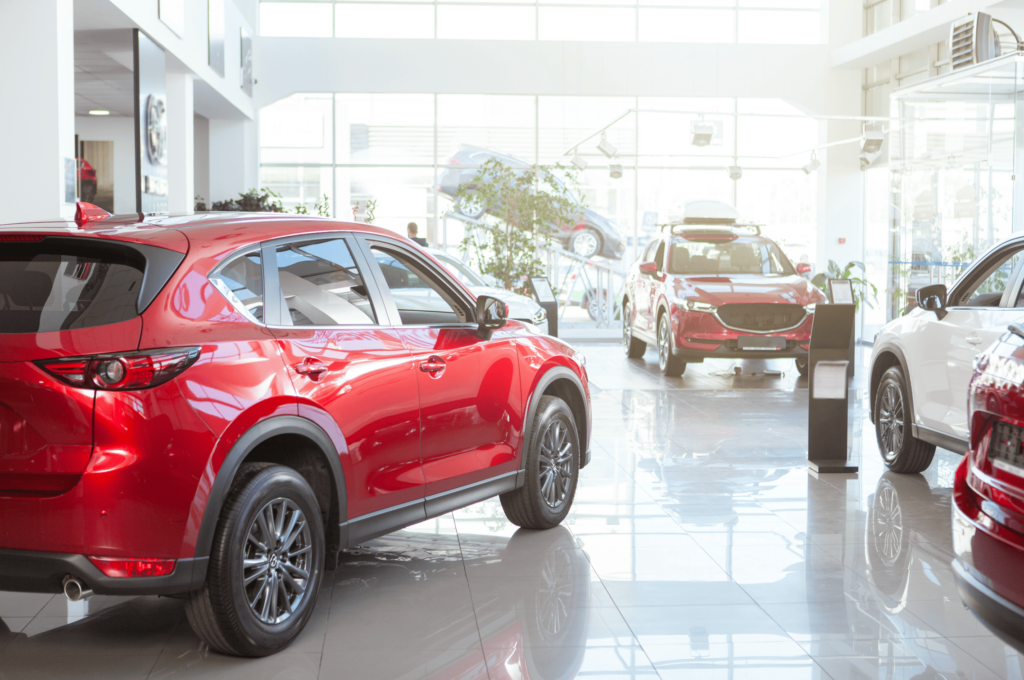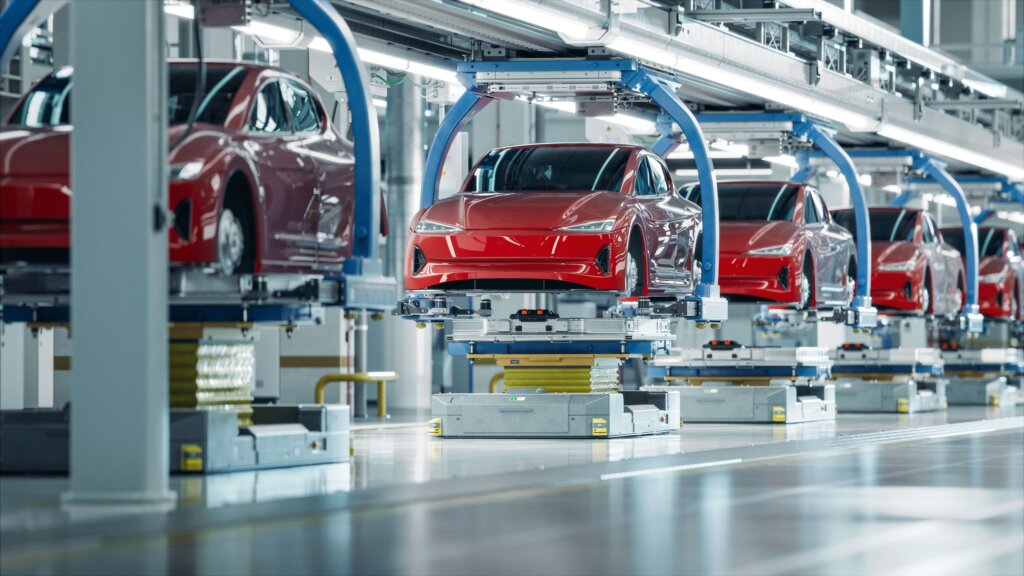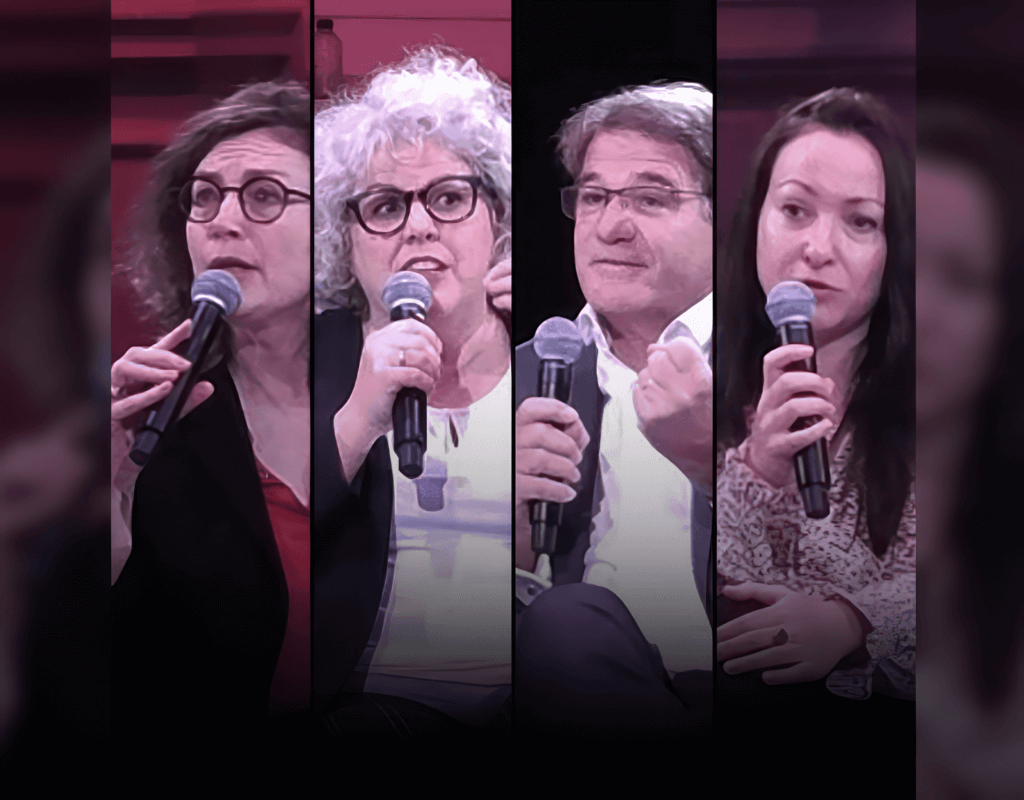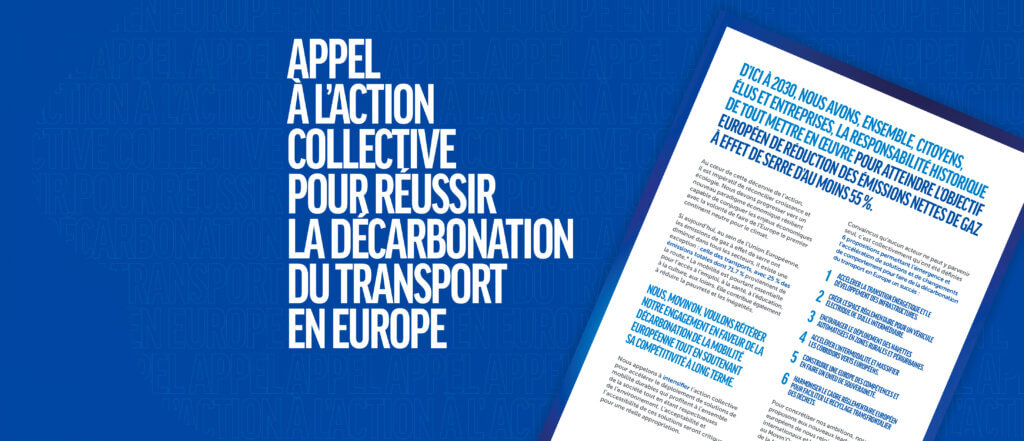Honda Canada Inks C$15 Billion Deal to Create Ontario EV Supply Chain
Canadian Prime Minister Justin Trudeau called it “a game changer for manufacturing…” Honda Canada executives and officials from all levels of government announced this week Honda’s investment of C$15 billion to create Canada’s first comprehensive electric vehicle supply chain of EV assembly plants and battery factories in one place, Alliston, Ontario.

Once fully operational in 2028, the innovative, world-class facility is expected to produce up to 240,000 electric vehicles a year.
“HONDA’S INVESTMENT IS A VOTE OF CONFIDENCE IN CANADA, IN CANADIAN AUTO WORKERS, AND IN OUR MANUFACTURING SECTOR. TOGETHER, WE’RE CREATIN GOOD-PAYING JOBS, GROWING OUR ECONOMY, AND KEEPING OUR AIR CLEAN.” – JUSTIN TRUDEAU, Prime Minister of Canada
Honda’s investment is a vote of confidence in Canada, in Canadian auto workers, and in our manufacturing sector. Together, we’re creating good-paying jobs, growing our economy, and keeping our air clean,” said Prime Minister Trudeau.
There have been many EV and battery supply chain commitments made in Canada in the past five years, but Honda’s investment dwarfs them all.
Currently, Honda of Canada Manufacturing operates three factories at its only Canadian facility near the town of Alliston, in southern Ontario, 65 miles north of Toronto. The factories produce the Honda Civic coupe and sedan, Honda’s best-selling vehicles worldwide, and the CR-V, a compact crossover SUV.
The Alliston facility produced its 10 millionth vehicle in 2023, and it will more than double in size when Honda Canada’s new EV assembly plant and battery manufacturing plants are complete.
To round out the new supply chain, Honda also intends to build a cathode active material and precursor (CAM/pCAM) processing plant through a joint venture partnership with POSCO Future M Co., Ltd., a South Korean lithium-ion battery materials and chemical company.
On the Alliston construction agenda, too, is a separator plant to be built in at the Honda Canada site through a joint venture partnership with Asahi Kasei Corporation, a multinational Japanese chemical company.
Honda’s Global CEO Toshihiro Mibe said, “Honda is making progress in our global initiatives toward the realization of our 2050 carbon neutrality goal. In North America, following the initiative to establish our EV production system capability in the U.S., we will now begin formal discussions toward the establishment of a comprehensive EV value chain here in Canada, with the support of the governments of Canada and Ontario.”
“We will strengthen our EV supply system and capability with an eye toward a future increase in EV demand in North America,” Mibe said.
Honda’s investments will create over 1,000 manufacturing jobs in Ontario, with the CAM/pCAM processing plant and separator plant helping to create thousands of additional direct and indirect jobs in Ontario and across Canada.
Speaking with the news platform Electric Autonomy Canada after the official ceremonies, Honda Canada president and CEO Jean Marc Leclerc said it is too early to say what EVs will be made at the new plant. Still, he said, these will be vehicles that “Canadians want” and including an “affordable SUV.”
Today, Canada’s automotive sector builds more than 1.5 million vehicles a year – one every 21 seconds. The industry supports nearly 550,000 direct and indirect jobs, and it contributed C$18 billion to Canada’s gross domestic product in 2023.
One of the country’s largest export industries, the sector is anchored by five automotive manufacturers: Ford, General Motors, Stellantis, Toyota, and Honda.
The Honda investment was made possible through strategic federal and provincial government supports estimated at C$5 billion. It expands Canada’s forecast electric vehicle production outlook as well as processing capacity for battery materials and represents Canada’s fourth announced battery cell gigafactory.
Prior announcements revealed the construction of the Stellantis and LG Energy Solutions NextStar battery plant in Windsor, Ontario, the Volkswagen battery plant in St. Thomas, Ontario, and the Northvolt battery plant east of Montreal, Quebec.
The Canadian government projects that the global sales of EVs will be over three times higher in 2030 than it was in 2023, and it is betting that Canada is well positioned to be a major player in electric vehicle production.
“CANADA IS HOME TO THE TALENTED WORKERS, RAW MATERIALS, CLEAN ELECTRICITY, AND SPECIALIZED PRODUCTION CAPABILITIES NEEDED TO BUILD ELECTRIC VEHICLES. TODAY’S ANNOUNCEMENT – HONDA’S LARGEST INVESTMENT IN NORTH AMERICA – IS ABOUT SEIZING THAT OPPORTUNITY FOR CANADIAN WORKERS. WE ARE SECURING CANADA’S ELECTRIC VEHICLE ADVANTAGE BY BUILDING OUT THE ENTIRE ELECTRIC VEHICLE SUPPLY CHAIN ECOSYSTEM, FROM RAW MATERIALS TO BATTERY MANUFACTURING TO AUTO ASSEMBLY LINES – ENSURING WORKERS BENEFIT TODAY AND FOR DECADES TO COME.” – CHRYSTIA FREELAND, Deputy Prime Minister and Minister of Finance, Canada.
Honda confirms it has begun the process of evaluating the scope of its investment and completing negotiations with its joint venture partners, work the companies expect to finalize during the next six months, when more details will be available, Honda Canada said in a statement.
To support the Alliston EV build-out, Honda is collaborating with the governments of Canada and Ontario to drive innovation in low-emissions manufacturing by accessing performance-based initiatives through the federal government’s new Investment Tax Credits and provincial direct and indirect incentives.
Premier of Ontario Doug Ford is excited about Honda’s move. “Today’s historic $15 billion investment by Honda delivers on our government’s promise to bring back manufacturing as part of our plan to rebuild Ontario’s economy, with thousands of good-paying union jobs and economic benefits for workers and families across the province. From our abundant critical minerals in the Ring of Fire to our highly skilled workforce, Ontario has what it takes to secure the jobs of the future as the world leader in electric vehicle manufacturing, with better jobs and bigger paycheques for our world-class workers.”
Honda's Strategy for North America
With the goal of carbon neutrality for all its products and corporate activities by 2050, Honda aims to make battery-electric vehicles and fuel cell EVs account for 100 percent of the company’s vehicle sales by 2040, including in North America – its largest market.
As the first step, Honda has positioned its existing auto production plants in the U.S. state of Ohio as its EV Hub for production, featuring the retooling of existing plants, at a cost of US$700 million and the construction of a new joint venture EV battery plant with South Korea’s LG Energy Solution, with an expected investment of US$4.4 billion.
A split-off from LG Chem, LG Energy Solution holds many battery-related patents as it manufactures lithium-ion batteries for electric vehicles, mobility, IT, and energy storage systems.
Honda expects EV production to begin at Ohio’s Marysville Auto Plant in late 2025. This factory will be the foundation for future EV and EV battery production, sharing knowledge and expertise with other North American Honda plants, including the new EV assembly and battery plants in Ontario.
As a second step in this initiative, Honda will strive to establish a comprehensive EV value chain that includes all aspects of EV production in Canada, from the procurement of raw materials for batteries, to the production of finished EVs.
As for secondary use and battery recycling, “Honda will realize low-carbon value creation throughout the entire battery life cycle, through which Honda will establish a highly profitable business foundation and contribute to the realization of a carbon-neutral society,” the company said in a statement April 24, 2024.
Discontent With the Honda Canada Deal Emerges
Honda Canada President Leclerc is enthusiastic about the new factories to be built at Alliston. “Honda of Canada Manufacturing is one of the premier automotive manufacturing facilities in the world and for nearly 40 years, our work has been guided by determination, innovation, and a relentless drive to evolve,” he said. “Today’s announcement is a historic investment by a manufacturer in the Canadian auto industry. It proudly honours the highly skilled associates who have earned a global reputation for manufacturing excellence and represents Honda’s recognition of the long-term attractiveness of the Canadian electric vehicle manufacturing ecosystem.”
But not all within the Honda Canada realm are as happy.
In March 2024, Honda Canada announced that it would reduce the profit margin its Canadian dealers earn on vehicle sales by up to 44 percent, amounting to hundreds of dollars on each vehicle, as Honda moves into the electric era, Automotive News Canada reported, citing dealers and other industry sources with knowledge of the situation.
The margin reduction starts with the new electric Honda Prologue, shown below, before expanding to the company’s broader lineup for the 2025 model year.
The Prologue, Honda Canada Inc.’s first battery-electric vehicle, will go on sale in just three Canadian provinces this spring – British Columbia, Ontario, and Quebec, at least for the first two model years.
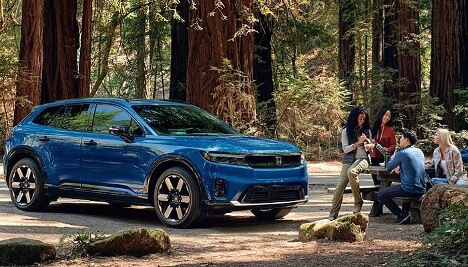
Automotive News Canada reports that Honda chose B.C., Quebec, and Ontario for initial Prologue sales because B.C. and Quebec have consumer rebates and enforceable sales mandates for EVs, while southern Ontario has broad EV charging infrastructure.
B.C. has the highest EV adoption rate in Canada, with EVs amounting to 17.5 percent of new passenger vehicle sales, according to the province.
Hayato Mori, Honda Canada’s assistant vice-president of business development and customer engagement, says the company is waiting for demand to pick up elsewhere across the country before introducing its EVs into other provinces and territories.
Just 14 months before the announcement of the profit margin cut, most Honda dealers in Canada had planned to invest in their stores to sell the Prologue, when it arrives in early 2024, company executives and dealers say.
In Canada, the price for a fully electrified Honda Prologue starts at C$59,990 and goes up to C$69,990, depending on the trim and options.
The cost of Honda-mandated EV upgrades to a store is estimated at C$300,000 to $400,000, depending on the amount of charging infrastructure already in place. Of the 236 Honda dealerships in Canada, 175 were ready for EVs by the end of 2023, even with high up-front costs and now lower profit margins too.
And Honda dealers are not the only discontented stakeholders.
Conservative Members of Parliament are pressuring the government to release details of its agreement with Honda Canada to build the EV and battery factories in Ontario.
The push for transparency comes after Canada’s Building Trades Union, CBTU, wrote to Prime Minister Trudeau April 10 asking him to intervene on another EV project, the NextStar plant in Windsor, Ontario, backed by Chrysler parent company Stellantis and Korean firm LG.
The union said foreign workers are displacing Canadian labourers at the NextStar construction site while 180 local millwrights and ironworkers are unemployed and available.
“Canadian workers are now being replaced by international workers at an increasing pace, on work that was previously assigned to Canadian workers,” wrote Sean Strickland, CBTU’s executive director, in an April 10 letter to Trudeau.
“Canadian workers are being sidelined without consequence. This is a slap in the face to Canadian workers and utterly unacceptable from LG and Stellantis, particularly when their shareholders stand to benefit from more than $15 billion in generous tax incentives from the Government of Canada.”
It’s a “brazen displacement of workers by major international corporations thumbing their noses at both the government of Canada, taxpayers and our skilled trades workers,” the April 10 letter asserts.
“Make the tax subsidies that you’re giving these companies conditional on hiring Canadians,” Strickland demanded.
At the latest House of Commons’ Government Operations Committee Monday, Conservative MP Rick Perkins of Nova Scotia pounced on the union’s letter, saying the federal government should not allow taxpayer-subsidized projects to employ foreign nationals.
In Alliston, after Honda Canada’s announcement, Prime Minister Trudeau avoided a question about whether the government’s agreement with Honda includes stated protection for Canadian workers.
“Actually,” Trudeau said, “the investments we’re making, whether it’s with NextStar, or here with Honda Motor Co., it’s all about creating great jobs for Canadian workers, and that’s what is actually being delivered.”
“This EV transition is an unstoppable reality and staking Canada’s claim and the jobs that go with it is only possible with the government investment and industrial strategy that Unifor has long called for,” said Unifor National President Lana Payne. Unifor is Canada’s largest union in the private sector, representing 315,000 workers in every major area of the economy.
Payne said, “It is paramount, however, that government investment comes with guarantees of good paying jobs and transition supports for workers, and that workers’ rights to organize are fully respected.”
Canada is vying with the world to obtain these long-term facilities and the thousands of jobs that will support the communities where they are built,” Unifor Quebec Director Daniel Cloutier said. “What governments are doing to secure the future of this industry is working, and a welcome change from past governments who oversaw the auto industry’s decline.”
All Movin'On news
in your mailbox
Auteur
Share
Tweets de @movinonconnect
Movin'On 2035 TODAY EP02 - Circular Economy & Competitivity
Movin’On 2035 TODAY EP01 – Fair Mobility for All https://x.com/i/broadcasts/1yNxagBrWZbGj
✨ THAT'S A WRAP!
Movin'On Summit 2024 has just concluded in Brussels!
More than 350 leaders and experts in sustainable mobility gathered to exchange ideas, collaborate, and share their vision for desirable and decarbonised mobility in Europe. Together, we explored ways to build…
🔴 Live from #MovinOnSummit2024
@AshaSumputh has just invited Denis Machuel, CEO at @AdeccoGroup and Florent Menegaux, President of the @Michelin Group & President of Movin'On
Sustainable mobility news
Discover the latest trends, analyses per theme, and our next meetings.


